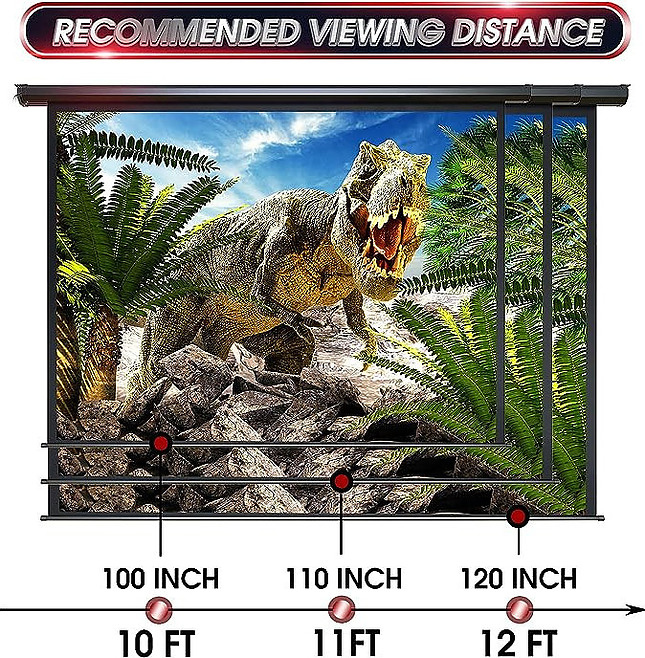Introduction to What is the Best Home Cinema Projector Screen
Home cinema projector screens are an essential component of any home theater setup. They provide the surface on which the projected image is displayed, and choosing the right screen can greatly enhance your viewing experience. With so many options available, it’s important to consider various factors before making a decision. In this article, we will explore the different types of home cinema projector screens, factors to consider when choosing one, and provide tips for installation and maintenance. Helping you to find the best home theater projection screen
Factors to Consider When Choosing the Best Home Cinema Projector Screen
Room size and layout: The size and layout of your room will play a significant role in determining the type and size of screen you should choose. Consider the dimensions of your room, including the height, width, and depth. Also, take into account any obstructions such as windows or doors that may affect the placement of the screen.
2. Projector type and brightness: The type of projector you have will also impact your choice of screen. Different projectors have different brightness levels, so it’s important to choose a screen that can handle the projector’s output. If you have a high-brightness projector, you may want to consider a screen with a higher gain to enhance the image quality.
3. Viewing distance and angle: The distance at which you will be sitting from the screen and the angle at which you will be viewing it are important factors to consider. If you have a large room and will be sitting far away from the screen, you may want to choose a larger screen size. Additionally, if you have seating that is off-center, you may want to consider a screen with a wider viewing angle.
4. Budget: Finally, your budget will also play a role in determining the type of screen you can afford. Fixed frame screens tend to be more expensive than manual pull-down screens, for example. It’s important to set a budget and prioritize the features that are most important to you.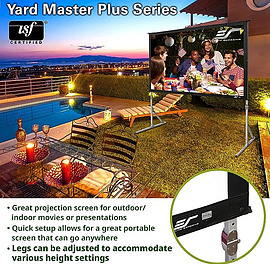
Types of Home Cinema Projector Screens
1. Fixed frame screens: Fixed frame screens are permanently mounted to the wall and provide a flat, tensioned surface for the projected image. They are known for their excellent image quality and lack of wrinkles or creases. Fixed frame screens are ideal for dedicated home theater rooms where the screen can be permanently installed.
2. Motorized screens: Motorized screens are retractable and can be raised or lowered at the touch of a button. They are a popular choice for multipurpose rooms where the screen needs to be hidden when not in use. Motorized screens can be mounted on the wall or ceiling and come in various sizes and aspect ratios.
3. Manual pull-down screens: Manual pull-down screens are affordable and easy to use. They feature a retractable screen that can be pulled down when needed and rolled up when not in use. Manual pull-down screens are a good option for those on a budget or for rooms where a permanent installation is not possible.
4. Portable screens: Portable screens are lightweight and easy to transport, making them a great option for those who want to take their home theater setup on the go. They are typically made of a flexible material that can be rolled up and stored in a carrying case. Portable screens are available in various sizes and aspect ratios.
Fixed vs. Motorized Home Cinema Projector Screens
1. Pros and cons of fixed frame screens:
– Pros: Fixed frame screens provide a flat, tensioned surface for the projected image, resulting in excellent image quality. They are also known for their durability and lack of wrinkles or creases. Fixed frame screens are ideal for dedicated home theater rooms where the screen can be permanently installed.
– Cons: Fixed frame screens can be more expensive than other types of screens, and they require a permanent installation. They may not be suitable for rooms where the screen needs to be hidden when not in use.

2. Pros and cons of motorized screens:
– Pros: Motorized screens are retractable and can be raised or lowered at the touch of a button. They are a popular choice for multipurpose rooms where the screen needs to be hidden when not in use. Motorized screens come in various sizes and aspect ratios, making them versatile for different setups.
– Cons: Motorized screens can be more expensive than manual pull-down screens, and they require a power source for operation. They may also require professional installation, depending on the complexity of the setup.
3. Which type is best for your setup:
The best type of screen for your setup will depend on your specific needs and preferences. If you have a dedicated home theater room and prioritize image quality, a fixed frame screen may be the best option. If you have a multipurpose room and need the flexibility of hiding the screen when not in use, a motorized screen may be more suitable. Consider your budget, room layout, and desired features when making a decision.
Screen Size and Aspect Ratio for Home Cinema Projector Screens
1. How to determine the right size and aspect ratio:
To determine the right size and aspect ratio for your home cinema projector screen, you will need to consider the size of your room, the seating distance, and the resolution of your projector. The Society of Motion Picture and Television Engineers (SMPTE) recommends that the viewing angle should be between 30 and 40 degrees for an immersive viewing experience. You can use online calculators or consult with a professional to determine the optimal screen size and aspect ratio for your setup.
2. Popular screen sizes and aspect ratios:
Common screen sizes for home cinema projector screens range from 80 inches to 150 inches or more diagonally. The most popular aspect ratios are 16:9 (widescreen) and 2.35:1 (cinemascope). The 16:9 aspect ratio is ideal for watching movies and TV shows, while the 2.35:1 aspect ratio is better suited for widescreen movies. Consider your viewing preferences and the content you will be watching when choosing the screen size and aspect ratio.
Screen Material and Gain for Home Cinema Projector Screens
1. Different types of screen materials and their characteristics:
There are several different types of screen materials available for home cinema projector screens, each with its own characteristics. Some common screen materials include matte white, grey, and high-contrast. Matte white screens are the most common and provide a neutral surface for displaying the projected image. Grey screens are designed to enhance contrast and black levels, making them ideal for rooms with high ambient light. High-contrast screens are designed to improve image quality in rooms with controlled lighting conditions.

2. Screen gain and how it affects image quality:
Screen gain refers to the amount of light that is reflected back to the viewer. A screen with a higher gain will reflect more light, resulting in a brighter image. However, higher gain screens may also introduce hotspots or uneven brightness across the screen. It’s important to strike a balance between screen gain and image quality based on your specific setup and viewing preferences.
Ambient Light and Home Cinema Projector Screens
1. How ambient light affects image quality:
Ambient light refers to any light in the room that is not coming from the projector. It can have a significant impact on image quality, especially in rooms with high levels of ambient light. Ambient light can wash out the colors and reduce contrast, resulting in a less immersive viewing experience. It’s important to consider the ambient light conditions in your room when choosing a home cinema projector screen.
2. Screen options for rooms with high ambient light:
If you have a room with high levels of ambient light, there are several screen options that can help improve image quality. Grey screens are designed to enhance contrast and black levels, making them ideal for rooms with high ambient light. High-contrast screens are also a good option for improving image quality in rooms with controlled lighting conditions. Additionally, you can consider using curtains or blinds to block out external light sources and create a more immersive viewing environment.
Installation and Maintenance of Home Cinema Projector Screens
1. Tips for proper installation and maintenance:
Proper installation and maintenance of your home cinema projector screen are essential for optimal performance. When installing the screen, make sure it is level and securely mounted to the wall or ceiling. Follow the manufacturer’s instructions for any specific installation requirements. For maintenance, regularly clean the screen surface with a soft cloth or brush to remove dust and debris. Avoid using harsh chemicals or abrasive materials that could damage the screen.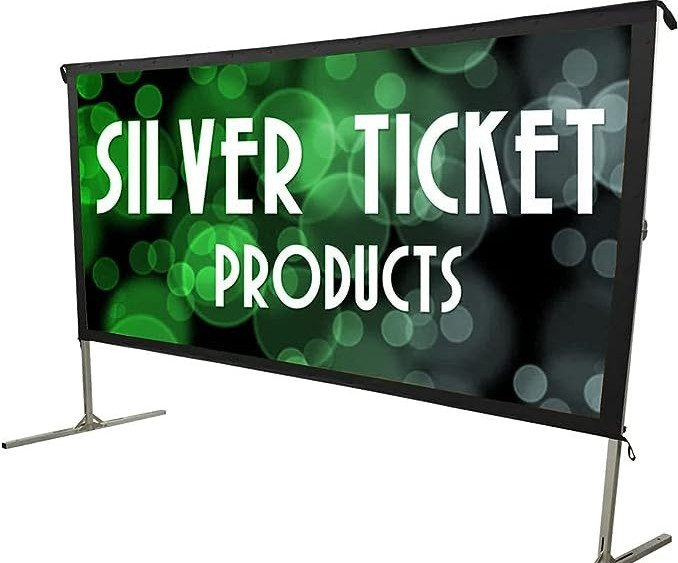
2. Common issues and how to troubleshoot them:
Some common issues that may arise with home cinema projector screens include wrinkles or creases in the screen material, uneven tension, and motorized screens not retracting or extending properly. If you notice wrinkles or creases in the screen material, you can try using a hairdryer on low heat to gently stretch the material and remove the wrinkles. If the tension is uneven, you may need to adjust the tensioning system according to the manufacturer’s instructions. For motorized screens, check the power source and ensure that all connections are secure.
Top Brands and Models of Home Cinema Projector Screens
1. Overview of popular brands and models: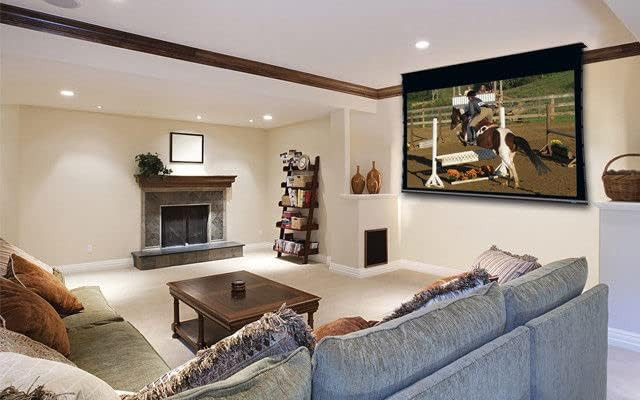
There are several top brands that specialize in home cinema projector screens, including Elite Screens, Silver Ticket Products, and Stewart Filmscreen. Each brand offers a range of models with different features and price points. Some popular models include the Elite Screens Sable Frame Series, Silver Ticket Products STR Series, and Stewart Filmscreen StudioTek 130.
2. Features and benefits of each:
Elite Screens is known for its wide range of screen options, including fixed frame, motorized, and portable screens. They offer screens with various screen materials and gain options to suit different viewing environments. Silver Ticket Products are known for thier high-quality screens at affordable prices. They offer fixed frame screens with tensioning systems for a flat surface and excellent image quality. Stewart Filmscreen is a premium brand that specializes in high-end screens for professional home theater installations. They offer screens with advanced screen materials and customization options for the ultimate viewing experience. Other popular brands include: Aoxun, Lensun. Click any of the links to search Amazon to find many more.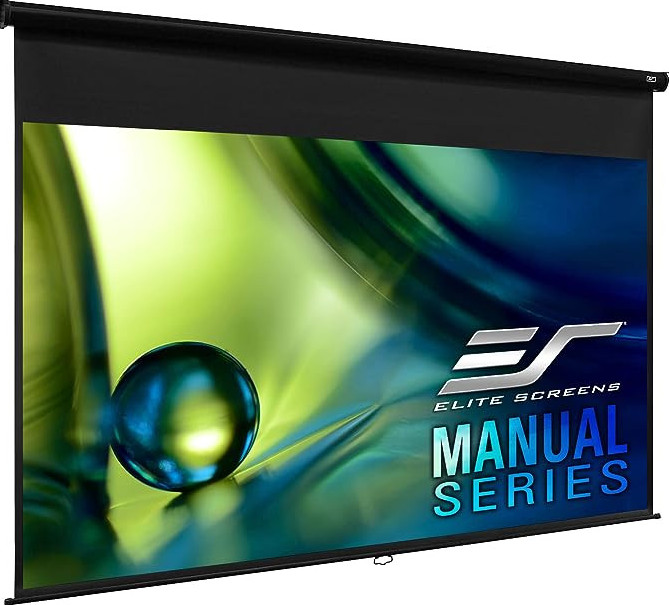
Conclusion: What is the Best Home Cinema Projector Screen for Your Needs
Choosing the best home cinema projector screen for your needs requires careful consideration of various factors, including room size and layout, projector type and brightness, viewing distance and angle, and budget. It’s important to choose a screen that is compatible with your specific setup and provides the best image quality for your viewing preferences. Consider the different types of screens available, such as fixed frame, motorized, manual pull-down, and portable screens, and weigh the pros and cons of each. Additionally, take into account the screen size and aspect ratio, screen material and gain, ambient light conditions, and installation and maintenance requirements. By considering all these factors, you can make an informed decision and create the perfect home theater setup for your enjoyment.
